What is a Cabinet Toe Kick? Enhancing Comfort and Design in Your Kitchen
The toe kick is a fundamental feature of kitchen design. The notched indentation in a base cabinet’s front enables you to stand closer to the counter. This decreases back strain since you don’t have to lean over to work at the counter and sink.
We constantly hear from our designers and customers about the importance of the toe kick in kitchen design and ergonomics. Although it is a standard feature, it doesn’t need to look standard. There are many customization opportunities for this small yet transformative design element.
Understanding the Toe Kick

Toe kicks are a recessed area at the bottom of base cabinets that make it more comfortable for you to work at your kitchen counter. It makes room for your toes, letting you stand closer to the counter without hitting your feet on the cabinet or standing in awkward positions. This makes cooking and prepping in your kitchen more comfortable and easier on your body.
Benefits of the Toe Kick in Your Kitchen
Having a toe kick as part of your kitchen design enhances functionality and comfort while also contributing to the aesthetic appeal of your kitchen.
Ergonomic comfort
Toe kicks allow you to stand closer to your counter so you don’t have to lean forward while working at the counter. This minimizes strain on your back and promotes a healthier posture while in the kitchen.
Increased workspace accessibility
Kitchen tasks become more efficient with a toe kick. While standing closer to the counter, you can mix, chop, and prep easily. This improves usability, making working in your kitchen a breeze.
Protection for your cabinets
Toe kicks protect the bottom of your cabinets from scuffs, spills, and foot traffic, enhancing the durability and longevity of your cabinets.
Aesthetic integration
Toe kicks hide the cabinet legs by providing a clean line at the bottom edge of your cabinetry. This contributes to the overall seamless look of your kitchen.
Additional storage options
Some toe kicks offer hidden drawers, adding storage space and making use of what otherwise would be wasted space. Kitchen towels, rolling pins, and other small kitchen items are ideal candidates for toe kick storage.
Customization and style
Toe kicks can be customized to match your cabinet style and finish, providing a great finishing touch to your kitchen design.
Standard Toe Kick Measurements
The toe kick measures 3 inches in height and about 4 inches in depth. These are the ideal measurements for optimal comfort while standing at your counters. This typical measurement plays a crucial role in kitchen design, balancing ergonomics with aesthetics.
Height
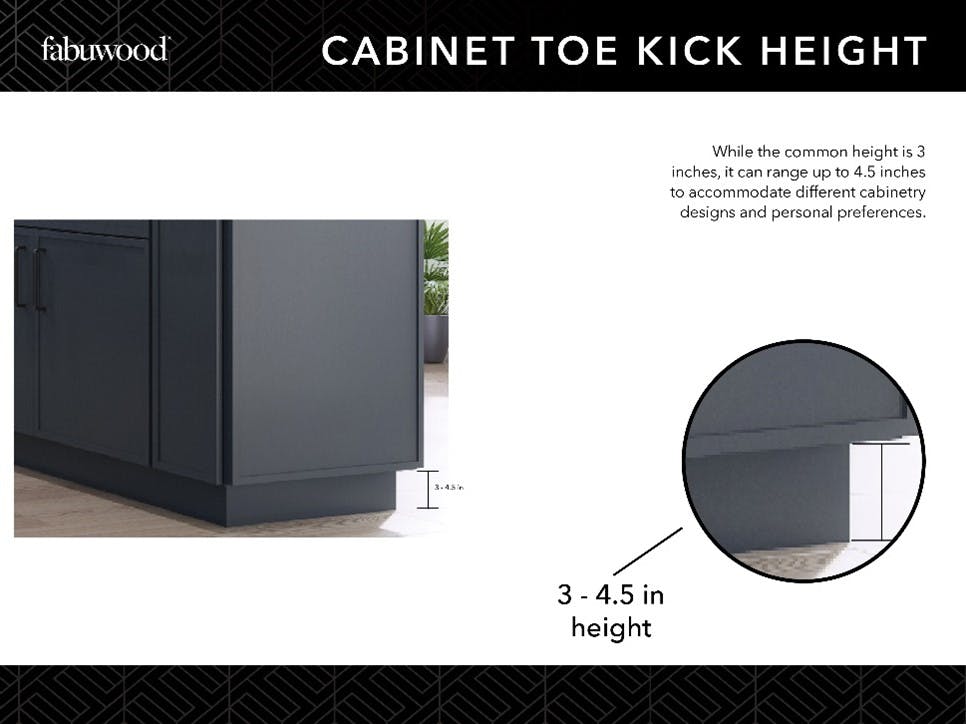
While the common height is 3 inches, it can range up to 4.5 inches to accommodate different cabinetry designs and personal preferences.
Depth
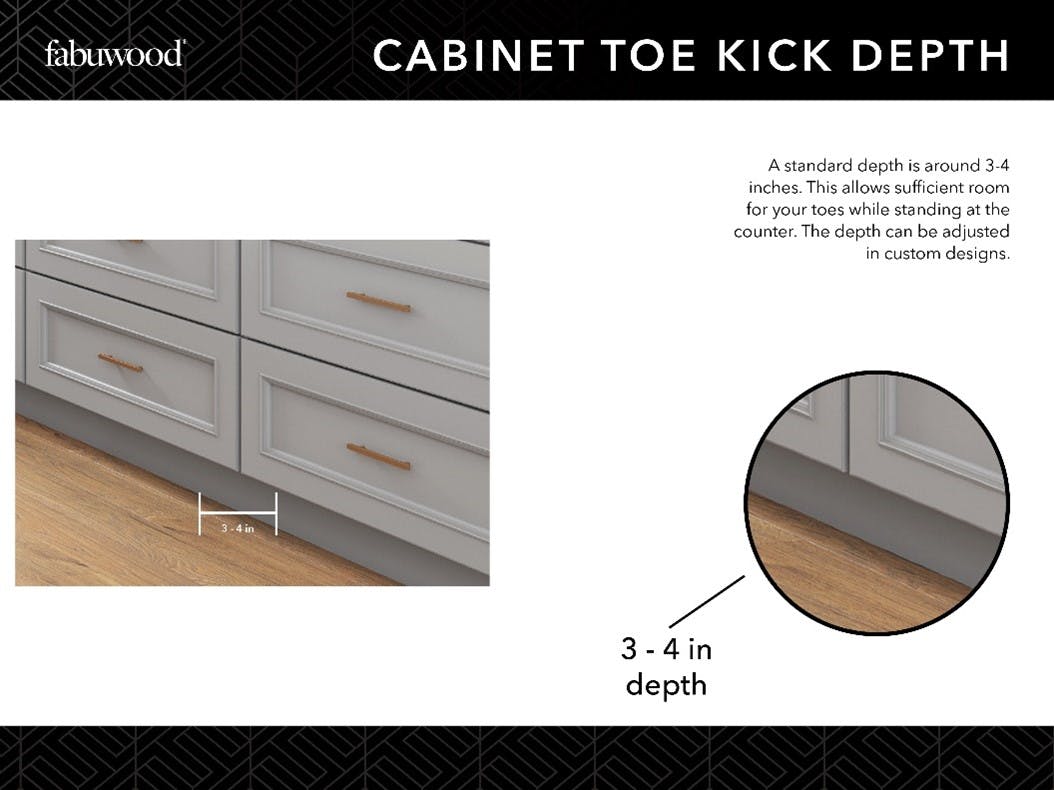
A standard depth is around 3-4 inches. This allows sufficient room for your toes while standing at the counter. The depth can be adjusted in custom designs.
These dimensions enhance the usability of the space, making it easier to engage in kitchen tasks. Custom cabinetry offers flexibility, allowing for specific design and ergonomic needs.
The Different Types of Toe Kick Styles
Standard Toe Kick
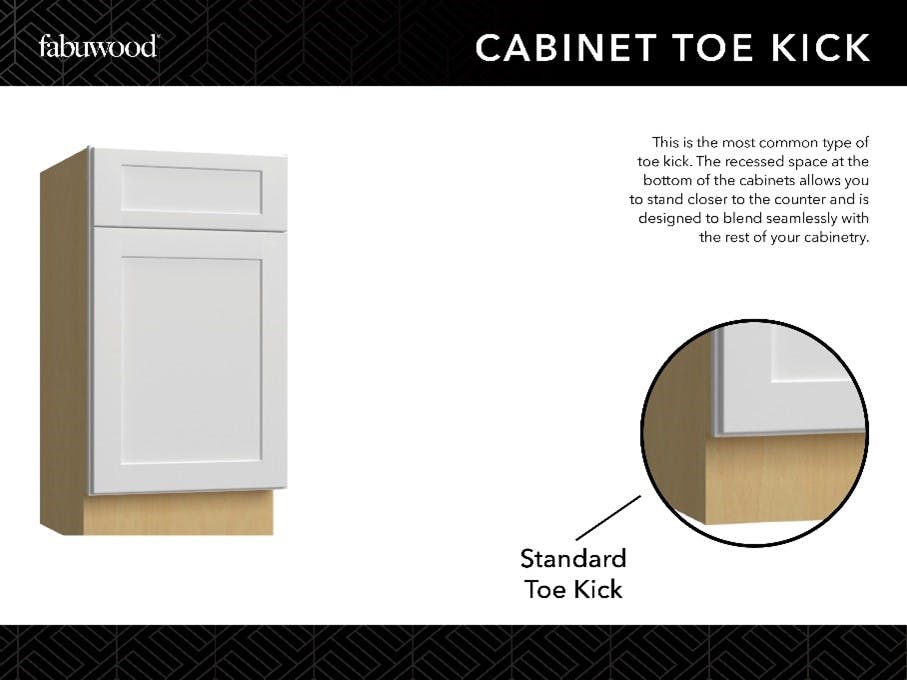
This is the most common type of toe kick. The recessed space at the bottom of the cabinets allows you to stand closer to the counter and is designed to blend seamlessly with the rest of your cabinetry.
Flush Mount Toe Kick
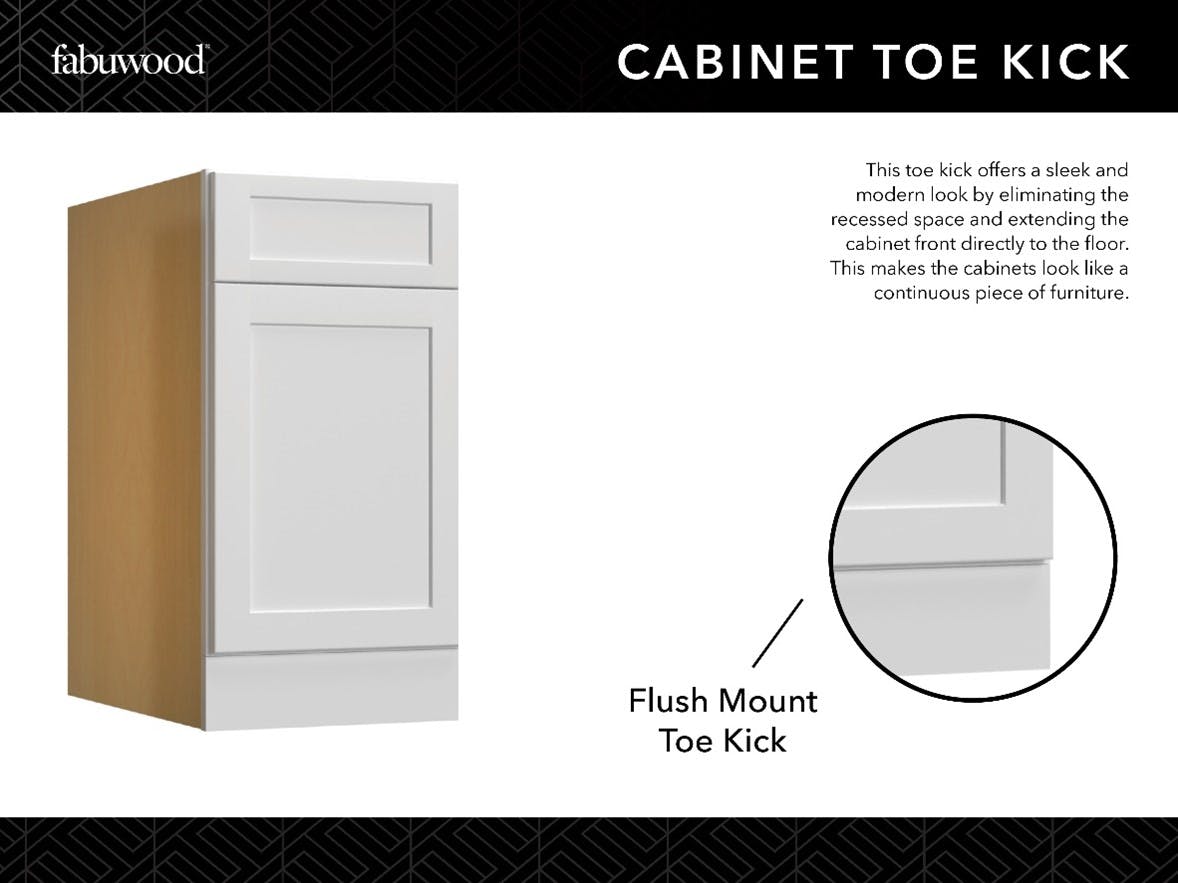
This toe kick offers a sleek and modern look by eliminating the recessed space and extending the cabinet front directly to the floor. This makes the cabinets look like a continuous piece of furniture.
Arched Valance
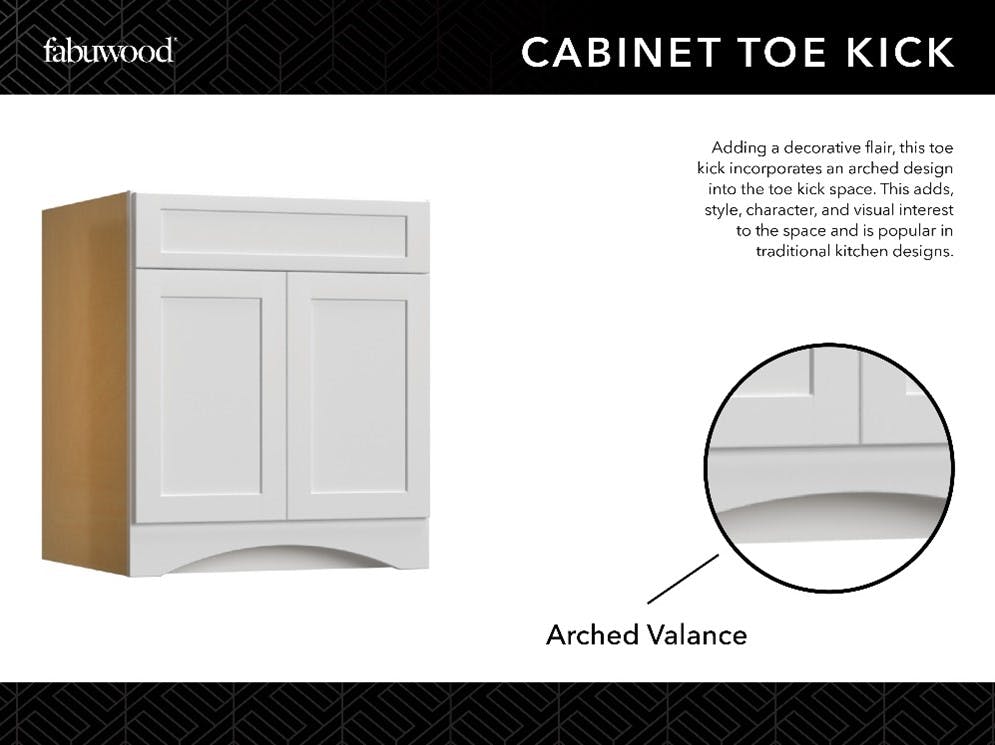
Adding a decorative flair, this toe kick incorporates an arched design into the toe kick space. This adds, style, character, and visual interest to the space and is popular in traditional kitchen designs.
Furniture Feet
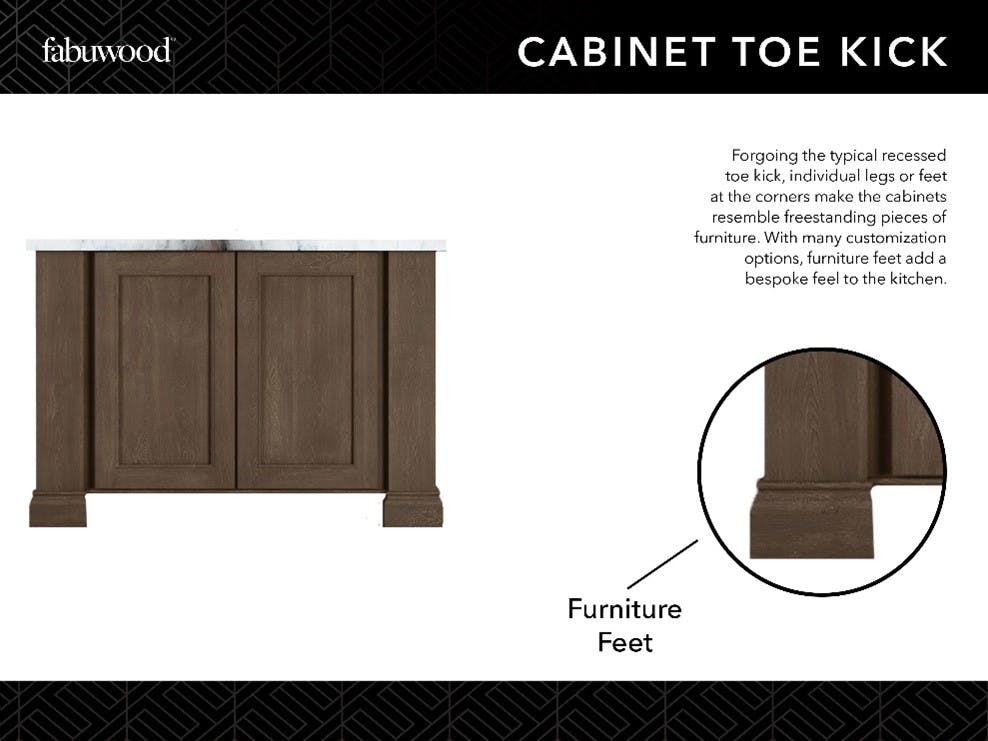
Foregoing the typical recessed toe kick, individual legs or feet at the corners make the cabinets resemble freestanding pieces of furniture. With many customization options, furniture feet add a bespoke feel to the kitchen. Although this is a highly ornate and upscale design, it does require extra cleaning underneath the cabinets where dust and debris can get trapped.
Creative Toe Kick Design Opportunities
There are a lot of ways to use your toe kicks, other than providing a space for your toes to rest. Toe kicks can make your kitchen more functional with this small, yet highly functional space.
Toe kick drawers
If you have a small kitchen, you’ll appreciate the added storage a toe kick drawer provides. They are great for towels, baking pans, and other flat items that normally get in the way in a regular cabinet.
Toe kick lighting
Like undercabinet lighting, toe kick lighting provides an easy way to lighten up your kitchen. Useful at night when you don’t want to turn on the overhead lights, toe kick lighting is motion-activated and will turn on as you walk by the cabinet.
Toe kick vacuum
Installing a motion-activated vacuum is a great idea for your toe kick. You can remove the bottom of the toe kick and keep the vacuum inside the cabinet or incorporate it directly into the toe kick. This will make it easier for you to clean up any crumbs. Simply sweep the crumbs near the toe kick to activate the vacuum and get rid of them.
The toe kick is a key feature in kitchen design that boosts comfort and usefulness. It makes working in the kitchen easier and more comfortable, adds to the kitchen’s aesthetic, and can be customized to fit your needs. Features like drawers, vacuums, and lighting can be added for extra convenience. Simply put, toe kicks are valuable for both their practicality and their ability to enhance kitchen designs.
Imagine how toe kicks will look in your dream kitchen with our Cabinet Visualizer.
